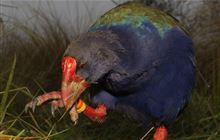Report takahē sightings
Introduction
Help the recovery programme by reporting sightings of takahē in the wild.
A few takahē live in Fiordland outside the Murchison Mountains Special Takahē Area.
Over the years hunters and walkers have reported takahē near the Kepler, Milford and George Sound Tracks, in the Stuart Mountains and in the areas to the west of the Murchison Mountains. As the number of takahē grow in recovery sites such as the Gouland Downs in Kahurangi National Park and Upper Whakatipu Valleys, there may be chance encounters with unbanded, wild birds that have travelled from known territories.
If you visit these areas, look out for feeding signs, droppings, feathers and the takahē's distinguishing calls.
Explore Visit a takahē to learn where you might see them across Aotearoa New Zealand.
Where to look
Takahē are found in a range of habitats.
The most likely place you'll spot one is in alpine tussock grassland areas with sources of water, or on fertile fans where there is a lot of tussock growth. You can also encounter takahē on valley floors with wetland grass clearings.
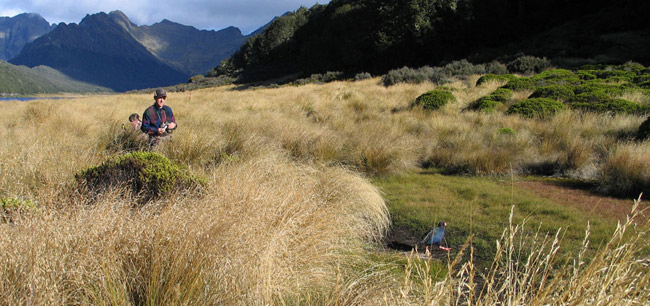
What to look for
What do takahē look like
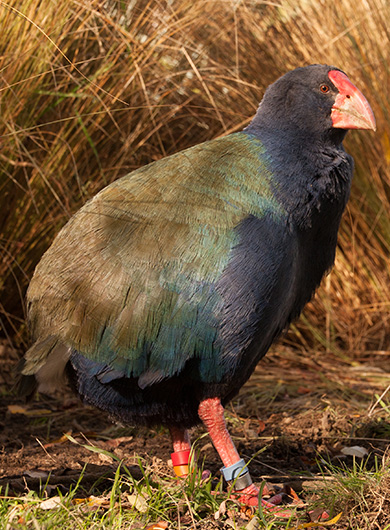
Profile of a takahē
Image: Sarah Stirrup | DOC
"It's a massive pūkeko" is a common reaction of those encountering takahē for the first time.
Takahē are similar to pūkeko, but are far larger, stouter and more colourful. Unlike the pūkeko, they can’t fly.
Feeding signs
The most characteristic sign of takahē feeding, is tussock tillers left on the ground once they have pulled them out and eaten 2-3cms of the juicy base.
When takahē have young chicks, they will often feed on insects, leaving roughed up earth where they have searched for the insects.
Droppings
Takahē eat all day and leave a lot of evidence in the form of droppings. A day’s worth could be up to 9 metres in length.
They vary in colour from olive green, possibly with a white coating, when very fresh, to a dried out light brown when older.
They’re nearly always made up of long fibrous tubes, like mini long, round hay bales.
Droppings are found wherever takahē have fed. A pile of droppings in shrubs or under tussock may indicate a site where takahē have roosted for the night.
Don’t be fooled though, as Canada geese have very similar droppings.
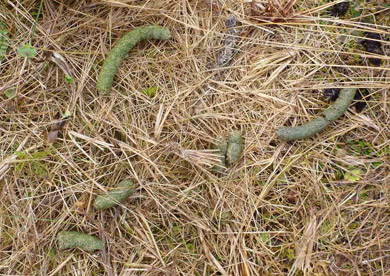
Droppings look like mini long hay bales
Feathers
Takahē feathers range from deep blue to olive green.
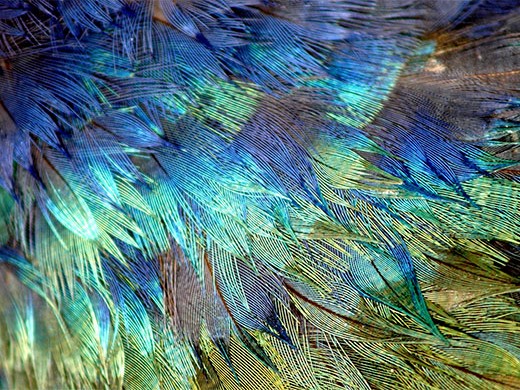
Takahē feathers
Image: Glen Greaves| DOC
Calls
Takahē have a range of calls. The most likely to be heard are a takahē duet or a single bird calling.
Takahē song (MP3, 622K)
00:38 – Takahē song.
Takahē song (MP3, 611K)
00:52 – Takahē song.
Our bird songs can be reused, even commercially, according to our copyright terms.
Report a takahē sighting
The information to record is date, location (GPS if possible) and number of birds seen or heard.
If you can, supply:
- date
- location (GPS if possible)
- the number of birds
- information about their age (chick, juvenile or adult)
- photos or samples of takahē signs such as faeces, discarded feathers or feeding signs.
To report a takahē sighting, contact the DOC Takahē Recovery Team at the Fiordland National Park Visitor Centre.
Email: takaherecovery@doc.org.nz
Takahē Recovery Programme
Department of Conservation
PO Box 29
Te Anau 9640
New Zealand
Phone: 0800 ASK DOC (0800 275 362)

